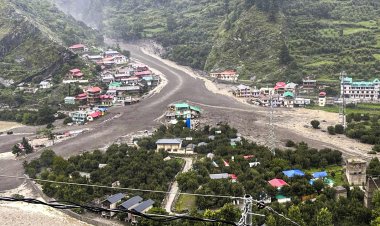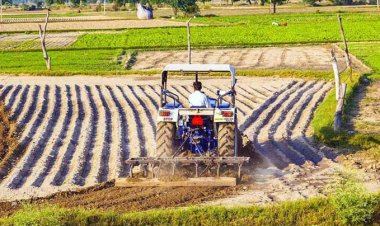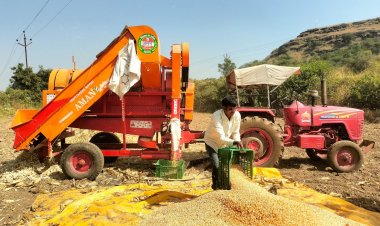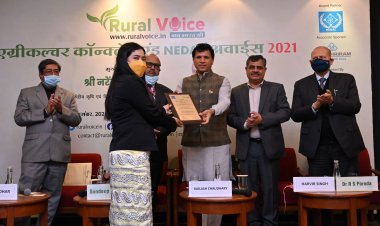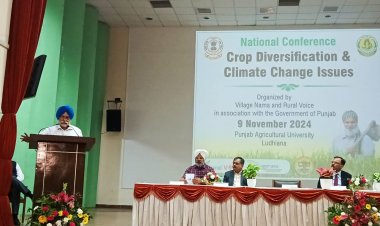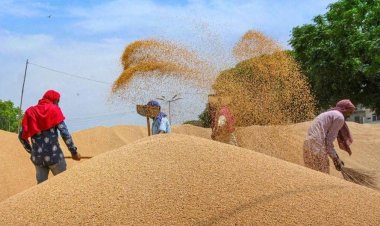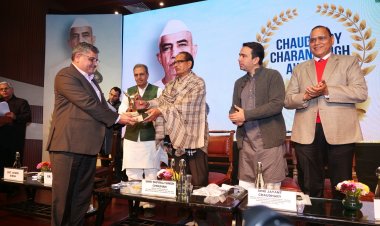Bringing agriculture back to the centre of policy making
The younger generation across states loses faith in agriculture as an attractive employment option, and seeks to escape to urban or even foreign locations for alternative livelihoods. To add to this brew is the rapidly developing climate crisis, which threatens our hard-won food security.
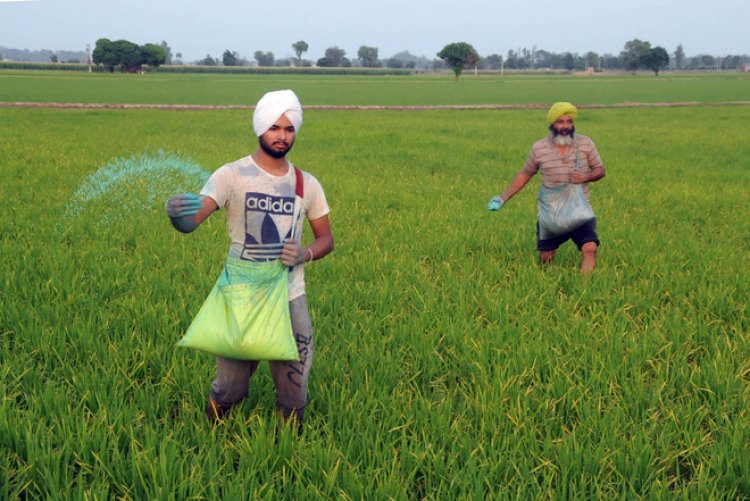
Four simultaneous crises have engulfed Indian agriculture. The first and foremost is an income crisis, with stagnant or falling incomes of farm households, which in turn leads to an investment crisis on the family farm. The second is a factor crisis, of degrading natural resources, especially of soils and water. The third is the accelerating human resource crisis, as the younger generation across states loses faith in agriculture as an attractive employment option, and seeks to escape to urban or even foreign locations for alternative livelihoods. To add to this brew is the rapidly developing climate crisis, which threatens our hard-won food security.
A common thread among the four crises is the almost complete lack of clarity on a coherent and coordinated policy response to address the multifaceted challenges facing the sector. While there may be the views for or against the three farm laws promulgated by the Central Government in 2020, the fact remains that the fierce resistance to the laws by large sections of the farming community, which led to their abrupt withdrawal, also marks the moment when serious policy attention to agriculture more or less stopped. It is true that ongoing programs have continued uninterrupted and the overall food economy continues to see vigorous government action of a tactical nature. However, the public has no clue about any long term planning or guidance to address the several unattended policy challenges outlined above.
A brief look at our own history of how food security was achieved gives us some clues about what needs to be done. It is worth recalling how India travelled from a severely food deficit country, which produced barely 50 million MTs of foodgrains in 1950, to a situation where the tentative estimate of last year’s food output is over 330 million MTs. By any standard, this is one of most remarkable achievements of independent India. An agricultural sector which was completely devasted by over a century of extractive British policies was revived over barely three decades, with the adoption of far-sighted policies by the Union and State governments, the dedication of agricultural scientists, hard work by field administrators and, above all, the willing and eager participation of the farming community in adopting complex new technologies and farm management systems.
The so-called Green Revolution broadly describes a holistic ecosystem development approach, which was adopted to modernize Indian agriculture and achieve food security. This ecosystem consisted of an elaborate network of research institutions, extension machinery, credit and input supply channels, marketing and procurement infrastructure and a nation-wide public distribution system, to permanently eradicate chronic food shortages and the spectre of famines. Much of the heavy lifting for this ambitious project was undertaken by the Central government but States backed these efforts whole-heartedly. In fact, the lack of ownership, pride and often ignorance about the epochal achievement of national food security among many of the current generation of political leaders, policy makers, scientists and administrators is one of the abiding puzzles of our times.
Three major lessons emerge from this brief review of the achievements of the Green Revolution phase:
i.A set of policy objectives was clearly defined and an ecosystem, holistic approach was adopted to address these objectives.
ii.The Centre and the +States worked in close coordination over a prolonged period of almost three decades, with each focusing on its assigned and agreed set of roles and responsibilities.
iii.Knowledge was the basis of policy formulation, with great attention being paid to high quality research in the central and state governed institutions, as well as building a robust data gathering and monitoring framework.
Can the success of the Green Revolution era provide some guidance on the way forward? I would argue that instead of reinventing the wheel, we should redeploy the learnings of that earlier phase, which brought us success in achieving the vital goal of national food security.
Three ideas are put forth for discussion and consideration in this regard:
1.The first and foremost requirement is to re-establish a relationship of trust and cooperation between the Centre and the States, to address the next wave of policy challenges in agriculture. Without this key pillar of the ecosystem being repaired and strengthened, it is unlikely that we can achieve optimum outcomes in terms of policy goals. There is currently no standing mechanism at the apex political level, either at the Centre or in the States, where agriculture policy challenges and options can be discussed in an atmosphere free of political grandstanding. We need the equivalent of the GST Council in the area of agriculture, preferably chaired by the Prime Minister, or at least the Union Agriculture Minister. This one step will be a significant break from the policy drift of the past two decades and focus national energies on the urgent task of rebuilding our agriculture ecosystem.
2.The second part of this triad is to identify the broken parts of the agriculture ecosystem, from research to extension, from financing to rural infrastructure and from technology to marketing. An integrated view of various agri value chains and India's desired place in global markets can form the basis of investment, research and skilling, infrastructure building etc. A major change from over fifty years ago, when the Green Revolution was being rolled out, is the growth of private sector capacity and interest in the sector. This can be leveraged successfully to rapidly repair the potential of the ecosystem to respond to the current set of challenges, especially value addition and consequent rural employment creation.
3.The third and equally important aspect of this new phase should be a highly decentralised approach to planning and implementation, with local land tenure systems, food and nutrition status, agroclimatic situations and the impact of climate change being factored in. To this end, research, extension and implementation capacity would have to be fostered within states and sub regions of states. The farming community is today far better informed and aware than was the case in the 1960s and 70s, which to an extent required highly centralised planning and investment, led by scientists and administrators, with little space for incorporating the inherent innovation and wisdom of the farming community. This time around the farming community has to be given a far more active role in planning and execution, making it a partner, not a passive recipient, of policy making.
While the above is a high-level set of principles to address the four crises of agriculture we spoke of at the beginning of this piece, this is by no means an exhaustive or even exclusive set of options. What is essential is to recognise the universality and integrated nature of the challenges facing agriculture, and that solutions are only possible by thinking of the country as one unit. Political contestation, the life-blood of a democracy, can and must continue, but food and nutrition security cannot be an area of division. The time to act is now.
(The writer is Director, Samunnati Agro and former Agriculture Secretary, Govt. of Madhya Pradesh, views expressed are personal)



 Join the RuralVoice whatsapp group
Join the RuralVoice whatsapp group

















